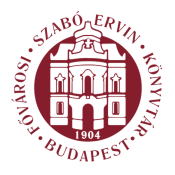Prakfalvi Endre: Roman Catholic Churches in Unified Budapest - Our Budapest (Budapest, 2003)
The Parish Church of St. Anthony and Franciscan Monastery, 1934
A memorial relief in the north aisle pays homage to the memory of István Möller. The text reads: Truth is my way and beauty my goal. The Parish Church of St. Anthony and Franciscan Monastery, 1934 No. 137 Pasaréti út, District II "Periíó vanlih, your wanti periih / Sayi the word in Padua" (Folk song) Following Franciscan style and placed beside the body of a church —cubic in appearance below, cylindrical above—there is a tower reaching to the skies in Pasarét, a modern neighbourhood important in terms of residential architecture. The founder was Pál P. Schrotty, a parish priest from Margit körút, and the first prior was Valérián Bohnert. Work on the designs began in 1931. Plans by the young Gyula Rimanóczy (1903— 58) were reviewed in summer of 1933 by the construction department of the capital's municipality headed by architect Gyula Petrovácz. The designs were not met with unmixed enthusiasm. According to opinions recorded in the minutes, "... the planned-for stone facing is exceedingly bleak. The design lacks spaciality in its effect. The tower with its vertical motif and the statue beneath (Christ collapses under the weight of the cross—Sári Somló) reminds one of a freight elevator. The entire concept is out of place in the residential area. In that respect even the Városmajor Church is a better fit, which this one exceeds in its inappropriateness ... This style creates cacophony rather than harmony of effect.” The motif of slender arches on the lantern of the campanile recur on the three-axis portico of the main entrance on the eastern facade. The three-aisled hall-church carried by a reinforced-concrete framework (structural engineering by Lajos Simkovics and Lajos Váradi Szabó) closes in a semi-circle. Resting on a raised platform, the chancel has an extension of curved arcades featuring hidden skylights. Connected to the northern aisle are four chapels. Singled out for praise by the contemporary architect Tibor Brestyánszky were the intelligent connection between church and monastery; the clever architectural compromise struck between monastic seclusion and the necessary exchange with the world at large, and the modest allowances made to comfort reconcilable with the philosophy of the order. He emphasised that the spirit of western Christianity is not forced into the "convolutions of orthodox formalism”; the living strength of its dogma, the flexibility of the spirit characterising Rome is borne 56
